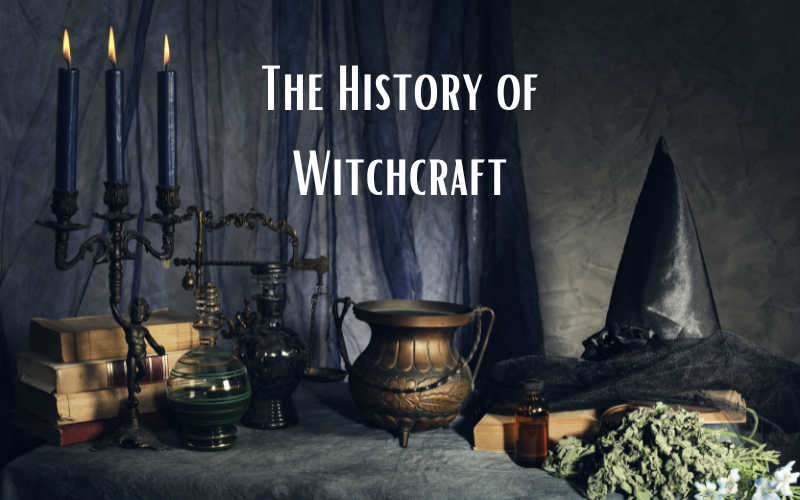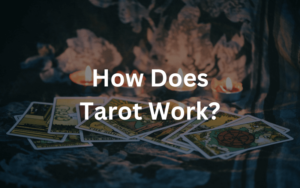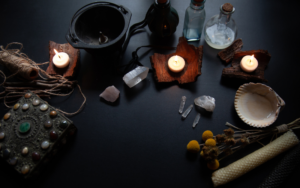Exploring the history of witchcraft is really eye-opening. It’s been quite a journey from old rituals to what we practice today. As someone who’s been into witchcraft for a while, I’ve seen how our past connects to now. It’s amazing how things have changed and how witchcraft has grown. This isn’t just about spells; it’s about knowing where we come from and how witchcraft keeps changing. Let’s dig into this history, uncover the truth, and see how it shapes what we do as witches today.
In This Article:
Origins of Witchcraft
Witchcraft has been around for ages, way before it got its name. It started with early humans connecting with nature, using herbs, and performing rituals—kind of like the first magical practices. This wasn’t just about magic; it was their way of understanding the world around them.
From Shamanism to Ancient Civilizations
In the beginning, it was all about shamanism. Shamans were like the community’s spiritual guides, healing and helping through their connection with nature. Then, as civilizations like Egypt, Greece, and Rome came along, witchcraft took on new forms. These places had their own magical traditions, like using amulets or casting spells for protection or healing.
Witchcraft’s Evolution
Over time, these practices spread and changed. Every place had its own take on witchcraft, mixing local beliefs with ancient rituals. This blend created a rich tapestry of witchcraft traditions worldwide.
So, when we talk about the history of witchcraft, we’re really talking about how people have always found ways to connect with the forces of nature. It’s a fascinating journey from prehistoric shamanism to the witchcraft practices we know today, showing just how deep and diverse our roots are.
The Middle Ages and the Witch Hunts
The Middle Ages were a tough time for witchcraft. It was a period when fear and misunderstanding turned into something darker. Witch hunts became a grim reality, with countless innocent people accused of practicing evil magic.
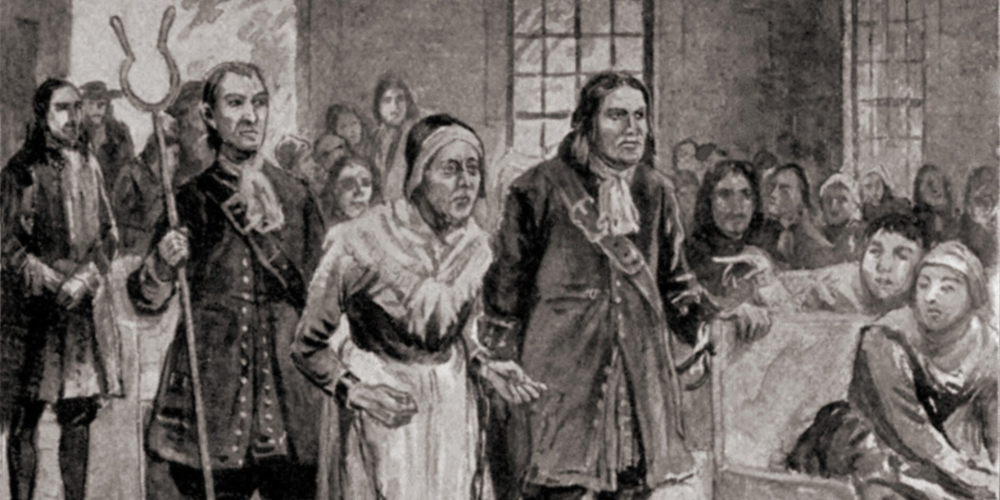
The Height of Witch Hunts
During this time, Europe was caught up in panic and paranoia. The infamous Malleus Maleficarum, a book written to identify and prosecute witches, fueled the fire. Places like Salem in the New World also saw their share of fear-driven trials, where just a whisper could lead to accusations of witchcraft.
Misunderstandings and Fear
What’s important to understand is that a lot of what was considered “witchcraft” was just traditional healing or folk practices. But, in the charged atmosphere of the Middle Ages, these practices were seen as a threat. This led to tragic events where many were unfairly persecuted.
The Impact on Witchcraft
The witch hunts left a deep scar on the history of witchcraft, shaping how it was viewed for centuries. It’s a somber chapter in our past, reminding us of the dangers of fear and misunderstanding. Despite this, witchcraft survived, evolving quietly and continuing to pass down the old ways, waiting for a time when it could re-emerge and be understood in a new light.
The Renaissance and Occult Revival
The Renaissance was a breath of fresh air for witchcraft and the occult. After the dark times of the Middle Ages, people started to see the world differently. This era was all about rediscovering ancient knowledge and celebrating human potential.
A New Interest in the Mystical
During the Renaissance, there was a huge revival in arts, science, and yes, even magic. People became fascinated with alchemy, astrology, and the mystical. It was a time when the line between science and magic was blurry, and exploring the unknown was encouraged.
Influential Figures
Some pretty influential folks came out of this period. Think of Heinrich Cornelius Agrippa and John Dee. These guys were scholars, dabbling in everything from magic to mysticism, and they had a big impact on how people viewed the occult.
Witchcraft Gets a Makeover
Thanks to this newfound curiosity, witchcraft started to shed some of its negative image from the Middle Ages. It wasn’t all smooth sailing, but there was definitely a shift. The occult started to blend with mainstream thinking, leading to a richer, more complex view of magic.
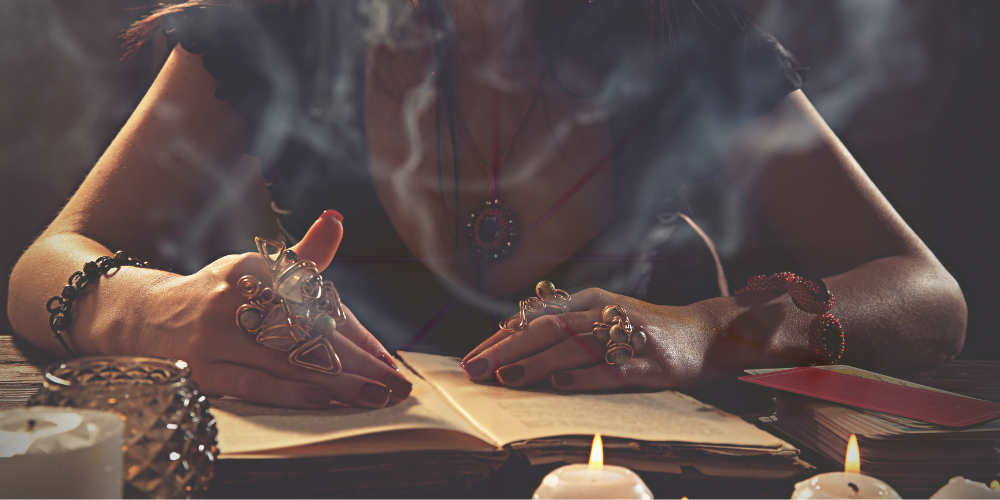
Setting the Stage for Modern Practices
The Renaissance laid the groundwork for modern witchcraft. By reintroducing ancient wisdom and blending it with the spirit of inquiry, it opened the door to new ways of thinking about and practicing magic. This period was crucial in transforming witchcraft from a misunderstood practice into a field of knowledge and exploration that continues to fascinate us today.
Witchcraft in the Modern Era
The modern era has witnessed a remarkable transformation in how witchcraft is perceived and practiced. No longer shrouded in secrecy and fear, witchcraft has entered the mainstream, celebrated for its rich heritage and empowering practices.
The Rise of Neopagan Movements
One of the biggest game-changers was the emergence of Neopagan movements like Wicca in the mid-20th century. Founded by figures like Gerald Gardner, these movements brought witchcraft into the public eye, emphasizing harmony with nature, ritual magic, and the Goddess. This new approach made witchcraft accessible and appealing to a broader audience.
Witchcraft and Feminism
The connection between witchcraft and feminism has been another powerful force in its modern revival. Many see witchcraft as a way to reclaim female power and spirituality, pushing back against patriarchal structures. This alliance has sparked a resurgence of interest in witchcraft as a form of empowerment and self-expression.
Digital Age Witchcraft
The digital age has taken witchcraft to new heights. With the internet, witches can share knowledge, connect with like-minded individuals, and form communities worldwide. Social media platforms have become spaces where practitioners can celebrate their craft and reach out to those curious about the path.
The Diversity of Modern Witchcraft
Today’s witchcraft is incredibly diverse, embracing a wide range of traditions, beliefs, and practices. From solitary practitioners to covens, from traditionalists to eclectic witches, the modern era has created a space where witchcraft can thrive in all its forms. It’s a time of unprecedented freedom and creativity in the craft, reflecting the ever-evolving journey of witchcraft through the ages.
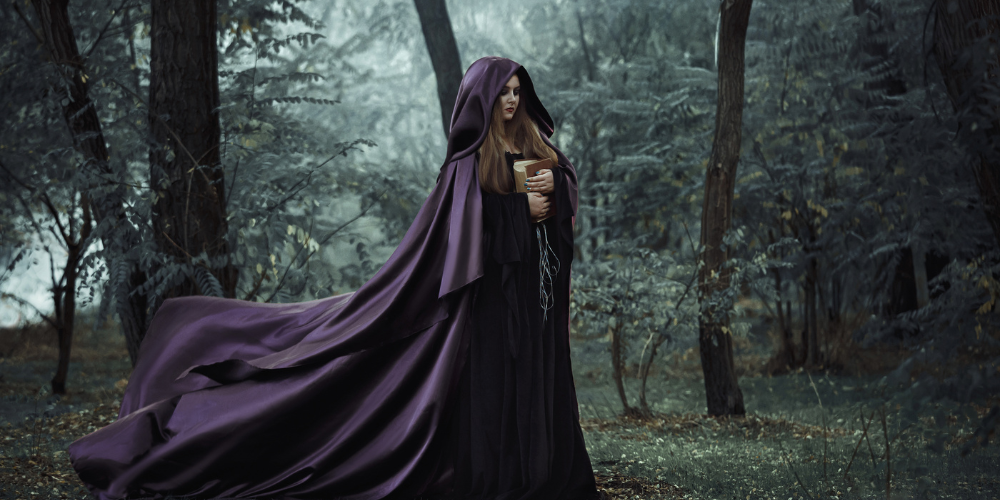
Challenges and Misconceptions
Despite witchcraft’s resurgence and growing acceptance, challenges and misconceptions persist. As we navigate the modern landscape of spirituality and personal belief, it’s crucial to address and debunk these myths to foster understanding and respect.
Battling Stereotypes
The stereotype of the “wicked witch” is deeply ingrained in popular culture, from fairy tales to Halloween decorations. These caricatures, often depicting witches as malevolent or dangerous, overshadow the reality of witchcraft as a peaceful, nature-based spiritual path. Combatting these stereotypes is an ongoing challenge for the witchcraft community.
Misunderstanding the Craft
Many still misunderstand what witchcraft entails, confusing it with fictional portrayals or sensationalized media accounts. This lack of understanding can lead to fear, discrimination, and even legal issues for practitioners. Education and open dialogue are key tools in clarifying what witchcraft truly represents.
The Issue of Cultural Appropriation
As witchcraft gains popularity, the line between respectful practice and cultural appropriation becomes blurred. It’s vital for modern witches to acknowledge and respect the origins of their practices, especially when they stem from closed or indigenous traditions. Navigating these waters with sensitivity and awareness is essential.
Navigating the Digital Age
While the internet has been a boon for connecting practitioners, it also poses challenges. Misinformation can spread quickly, and online spaces can sometimes foster gatekeeping or toxicity. Ensuring that digital witchcraft communities remain inclusive, supportive, and accurate is an ongoing effort.
Conclusion
Facing these challenges head-on, with a commitment to education, respect, and open-mindedness, will help the witchcraft community continue to thrive. By dispelling myths and embracing the diversity within our ranks, we can ensure that witchcraft remains a powerful and positive force in the modern world.
Interested in exploring witchcraft? You can start here: 7 Must-Read Tips on Modern Witchcraft for Beginners!


